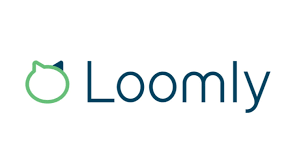In the ever-evolving landscape of social media, the tools we use to manage our digital presence can significantly impact our success. Whether you’re a small business owner, a marketing professional, or a content creator, finding the right platform to schedule posts, analyze performance, and engage with your audience is crucial. Two contenders that often come up in the search for the perfect social media management tool are Loomly and ContentCal. Both platforms offer a suite of features designed to streamline social media management, but they each have their unique strengths and focal points. In this article, we’ll dive deep into Loomly and ContentCal, comparing their features, ease of use, and overall value to help you decide which tool is the best fit for your social media strategy.
| Loomly | ContentCal |
|---|---|
 |  |
| G2 Score – 4.6 out of 5 stars | G2 Score – 4.2 out of 5 stars |
| TrustRadius Score – 8.3/10 | TrustRadius Score – 8.6/10 |
Ease of Use and Interface
The user experience of a social media management tool is paramount. It’s the interface between you and your social media strategy, serving as the cockpit from which you pilot your online presence. An intuitive, user-friendly platform can make social media management a breeze, while a complicated, cluttered interface can turn it into a chore. Let’s see how Loomly and ContentCal stack up in this essential aspect.
Loomly: Streamlined and Intuitive
Loomly boasts a clean, intuitive interface that emphasizes ease of use. The dashboard presents a clear overview of your social media calendar, upcoming posts, and performance metrics, making it easy to get a snapshot of your social media health at a glance. For those new to social media management, Loomly offers a gentle learning curve, with guided workflows for creating and scheduling posts. This step-by-step approach not only helps in crafting compelling content but also in understanding the best practices for social media engagement.
One of the standout features of Loomly is its content suggestion system. This tool provides you with daily post ideas based on trends, holidays, and more, ensuring you’re never at a loss for what to post next. This feature is particularly useful for small businesses or solo entrepreneurs who may not have a dedicated content creation team.
ContentCal: Organized and Collaborative
ContentCal places a strong emphasis on collaboration and content planning. Its calendar interface is highly visual, making it easy to organize your content strategy and see what’s scheduled at a glance. ContentCal’s unique selling point is its ‘Content Hub,’ a space where you can store ideas, post drafts, and collaborate with your team. This makes it an excellent option for businesses with multiple team members working on social media.
The platform also offers a variety of integrations with other tools like Google Drive and Slack, allowing you to streamline your content creation and approval process. This interconnectedness is a boon for teams that rely on a suite of tools for their marketing efforts, making ContentCal a hub for all things content-related.
Content Creation and Scheduling Capabilities
At the heart of social media management is the ability to create compelling content and schedule it effectively. Both Loomly and ContentCal offer tools to not only craft engaging posts but also to plan their release strategically across various social platforms. Let’s explore how each platform approaches content creation and scheduling.
Loomly: A Blend of Creativity and Efficiency
Loomly stands as a beacon for those who seek a harmonious blend of creative freedom and scheduling efficiency. The platform understands the dynamic nature of social media and the constant need for fresh, engaging content. It addresses this through a user-friendly interface that simplifies the creation process while offering advanced features to refine and optimize content.
At the core of Loomly’s content creation capabilities is its intuitive post builder, which guides users through crafting messages tailored to each social media platform. This ensures that content is not only engaging but also platform-appropriate, maximizing its impact. The inclusion of a comprehensive library of templates and visual assets further fuels creativity, providing users with inspiration and tools to bring their ideas to life.
Scheduling in Loomly is elevated by its intelligent auto-scheduling feature, which leverages data to suggest the best times for posting, based on when your audience is most active. This data-driven approach removes much of the guesswork associated with scheduling, ensuring that your content reaches the widest possible audience. Moreover, the platform’s real-time post previews offer a glimpse into how content will appear on various platforms, allowing for adjustments before anything goes live. This meticulous attention to detail underscores Loomly’s commitment to excellence in content presentation.
ContentCal: Centralizing Collaboration in Content Planning
ContentCal approaches content creation and scheduling with a strong emphasis on collaboration and strategic planning. The platform positions itself as a central hub for all things content-related, encouraging teams to work together from the initial brainstorming phase to the final stages of scheduling and publication.
The Content Hub, a standout feature of ContentCal, is where the magic happens. It serves as a collaborative space where team members can deposit ideas, draft posts, and collectively refine content. This process not only democratizes content creation but also ensures a diverse range of voices and perspectives are reflected in your social media output. The ability to integrate with essential tools like Google Drive and Slack enhances this collaborative workflow, ensuring that resources are shared efficiently and communication remains fluid.
Scheduling content in ContentCal is an exercise in visual planning. The platform’s calendar offers a clear, comprehensive view of your content strategy, allowing for easy adjustments and ensuring a balanced distribution of posts. This visibility is crucial for spotting gaps in your content plan or identifying opportunities for thematic content around specific events or holidays. Furthermore, ContentCal’s focus on collaborative scheduling means that team members can suggest, review, and approve posts, fostering a sense of shared ownership and responsibility for the social media strategy.

Related: Check out our free SEO suite

Analytics and Reporting
The ability to track performance and measure the effectiveness of your social media campaigns is indispensable. A good analytics and reporting tool not only provides insights into what’s working but also highlights areas for improvement. Here’s how Loomly and ContentCal stack up in terms of their analytics capabilities.
Loomly: Comprehensive Insights with Simplicity
Loomly offers a robust analytics suite designed to be both comprehensive and user-friendly. The platform provides detailed reports on key performance indicators such as engagement rates, reach, and follower growth across all connected social media channels. This allows users to quickly assess the success of their content and understand audience behavior.
One of the standout features of Loomly’s analytics is its customizability. Users can tailor reports to focus on the metrics that matter most to them, ensuring that they’re always in tune with their social media performance. Additionally, Loomly simplifies the process of sharing these insights, with easy-to-generate reports that can be exported and shared with team members or clients.
Loomly also offers real-time analytics, giving users immediate feedback on how their posts are performing. This instant access to data can be incredibly valuable for making quick adjustments to your strategy and capitalizing on what works.
ContentCal: Strategic Insights for Team Collaboration
ContentCal’s approach to analytics and reporting is centered around not just tracking performance but also facilitating strategic planning and collaboration. The platform offers a comprehensive analytics dashboard that provides a snapshot of your social media activity, including post engagement, audience demographics, and content reach.
What sets ContentCal apart is its emphasis on actionable insights. The platform offers recommendations based on your analytics data, helping you identify content types that resonate with your audience and optimal posting times. This focus on actionable intelligence makes it easier for teams to refine their content strategy collaboratively.
Furthermore, ContentCal makes reporting a team effort. Its analytics features are designed to be accessible and understandable by all team members, encouraging a shared understanding of social media performance. Reports can be customized and shared internally, fostering a culture of continuous improvement and strategic alignment.
Integration and Collaboration Features
Both Loomly and ContentCal recognize the importance of integrations and collaborative workflows in managing social media campaigns. Here’s how each platform addresses these needs
Loomly: Streamlining Workflows with Integrations
Loomly stands out for its commitment to enhancing the user workflow through intelligent integrations. Recognizing the diverse toolkit modern marketing teams employ, Loomly connects with a broad spectrum of applications and services, notably through its integration with Zapier. This connection acts as a bridge to thousands of other applications, enabling users to create a custom workflow that suits their specific needs. Whether it’s automating the import of content ideas from an email marketing platform or syncing with CRM tools to better understand audience engagement, Loomly’s integrations are designed to streamline and enrich the social media management process.
Collaboration within Loomly is thoughtfully designed to ensure that content creation and approval are seamless and effective. The platform’s environment encourages team members to engage in the content development process actively, offering feedback, suggestions, and approvals directly within the tool. This level of interaction not only enhances the quality of the content but also ensures that it aligns with the brand’s messaging and goals. Furthermore, customizable user permissions play a critical role in managing team dynamics, allowing for clear delineation of responsibilities and ensuring that the workflow remains uncluttered and focused.
ContentCal: Fostering Team Collaboration at Its Core
ContentCal’s approach to integration and collaboration is deeply rooted in the belief that social media success is a team sport. The platform’s Content Hub is a testament to this philosophy, serving as a collaborative space where ideas can be shared, developed, and refined into impactful social media posts. This centralized hub is designed to capture the collective creativity of the team, making it an invaluable resource for content planning and execution.
Integrations are another area where ContentCal shines, offering direct connections to a suite of tools that modern businesses rely on, including Google Drive for document storage, Slack for communication, and Trello for project management. These integrations are not just about convenience; they’re about creating a cohesive workflow that encompasses all facets of social media management. By allowing data and content to flow freely between tools, ContentCal enables teams to work more efficiently and stay aligned on their objectives.
Moreover, ContentCal’s adoption of Zapier integration expands its capabilities exponentially, connecting users with a vast ecosystem of apps and services. This flexibility ensures that teams can automate repetitive tasks, focus on high-value activities, and maintain a consistent presence across all their social channels.
Pricing
| Loomly | Base Plan: Starting at $26 per month (billed annually) for 2 users and 10 social accounts, including basic analytics and post scheduling. Standard Plan: At $59 per month (billed annually), offering 6 users and 20 social accounts, with advanced analytics and custom workflows. Advanced Plan: Starting at $129 per month (billed annually), with 16 users and 35 social accounts, plus more advanced features. Premium Plan: At $269 per month (billed annually), for 26 users and 50 social accounts, including all features and priority support. |
| ContentCal | Pro Plan: Starting at $17 per month per user (billed annually), offering 4 social profiles, unlimited posts, and content planning features. Company Plan: Custom pricing for teams and businesses that need more social profiles, additional users, and advanced features like analytics and priority support. |
Conclusion
In concluding our comprehensive exploration of Loomly and ContentCal, it’s evident that both platforms offer powerful solutions tailored to the unique demands of social media management. Each platform has been carefully designed with specific users in mind, catering to their needs through distinct features, functionalities, and approaches to content creation, scheduling, analytics, and collaboration.
Loomly emerges as a highly intuitive tool, ideal for individuals, small businesses, and teams that value a blend of creativity, efficiency, and data-driven insights. Its user-friendly interface, combined with features like auto-scheduling, post optimization tips, and a vast library of templates and assets, makes it a strong contender for those looking to streamline their social media management process while maximizing engagement and reach. Loomly’s focus on providing actionable analytics and customizable reporting tools further enhances its appeal, offering users the insights needed to refine their strategies over time.
ContentCal, on the other hand, stands out for its collaborative-first approach, making it a perfect fit for larger teams and agencies that prioritize strategic planning and teamwork in their content creation process. The platform’s Content Hub and visual calendar encourage collective brainstorming and content planning, facilitating a seamless workflow from idea generation to post publication. With robust integrations and a focus on actionable analytics, ContentCal provides a comprehensive solution for teams looking to harness the collective creativity and expertise of their members to foster a cohesive and impactful social media presence.
Read Next:
- SEO Best Practices for Green E-Commerce Sites
- Geo-Localization Techniques for Global Sustainable Markets
- International Link Building for Sustainable Brands
- Cultural Considerations for Global Green SEO
- Multilingual SEO for Sustainable Brands: Here’s What We Would Do






















Comments are closed.